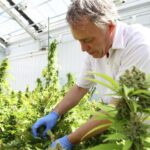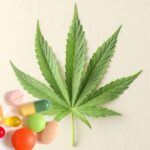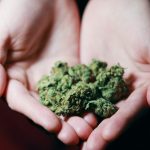10 Unique Differences Between Indica And Sativa

Cannabis has been around for centuries and is known for its medicinal and recreational use. It is a complex plant with over 500 compounds, including cannabinoids, terpenes, and flavonoids, each of which has its own unique properties.
Cannabis use is widespread around the world, with estimates suggesting that up to 192 million people use cannabis annually. Cannabis is one of the most widely used illicit substances, and its use has been increasing in recent years due to changing attitudes and legislation surrounding the drug.
The highest rates of cannabis use are found in North America, Western Europe, and Australia, where up to 15% of the adult population may use cannabis. In the United States, cannabis use is particularly prevalent, with an estimated 43.5 million people having used cannabis in the past year.
Cannabis use is also widespread in Africa, Asia, and South America, where it is often used for medicinal and spiritual purposes. In countries such as India, Nepal, and Jamaica, cannabis has been used for centuries in religious and cultural ceremonies.
Despite its widespread use, cannabis remains illegal in many countries and possession, distribution, and use of the drug can result in criminal charges. However, in recent years, there has been a growing movement to legalize cannabis for medical and recreational purposes, and several countries, including Canada, Uruguay, and some US states, have already legalized cannabis. As more countries legalize cannabis, it is likely that the use of the drug will continue to grow.
Classification of Cannabis
Cannabis plants can be broadly classified into two categories, Indica and Sativa, based on their physical and chemical characteristics. In this article, we will explore the differences between Indica and Sativa and their effects on the human body.
What is Indica?
Indica is a type of cannabis plant that is native to the Hindu Kush mountain range in Afghanistan, Pakistan, and India. It is a shorter, bushier plant with wider leaves than Sativa. Indica plants have a higher CBD (cannabidiol) content and a lower THC (tetrahydrocannabinol) content than Sativa. CBD is a non-psychoactive compound that has anti-inflammatory, anti-anxiety, and pain-relieving properties, while THC is the psychoactive compound that produces the “high” associated with cannabis use.
Indica plants grow faster and have a higher yield than Sativa, making them a popular choice for commercial growers. They are also easier to cultivate indoors due to their compact size and shorter flowering time. Indica strains are commonly used for medicinal purposes due to their relaxing and sedative effects, making them useful for treating conditions such as anxiety, insomnia, and chronic pain.
What is Sativa?
Sativa is a type of cannabis plant that is native to tropical regions such as Southeast Asia, Central America, and Africa. It is a tall, slender plant with narrow leaves and a longer flowering time than Indica. Sativa plants have a higher THC content and a lower CBD content than Indica, making them more psychoactive and less medicinal. Sativa strains are often used for recreational purposes due to their energizing and uplifting effects, making them useful for social situations and creative activities.
Sativa plants require more light and space to grow than Indica and are more suited to outdoor cultivation. They have a lower yield than Indica but are known for their high-quality buds and distinct flavor profiles. Sativa strains are commonly used to treat conditions such as depression, fatigue, and ADHD due to their stimulating and mood-enhancing effects.
What are the Differences Between Indica and Sativa?
1. Physical Appearance
One of the most noticeable differences between Indica and Sativa is their physical appearance. Indica plants are shorter and bushier than Sativa, with wider leaves and denser foliage. They grow to a height of 3-4 feet and have a short flowering time of 6-8 weeks. Sativa plants, on the other hand, are taller and more slender, with narrow leaves and sparse foliage. They can grow up to 20 feet in height and have a longer flowering time of 10-16 weeks.
2. Chemical Composition
Another significant difference between Indica and Sativa is their chemical composition. Indica plants have a higher CBD content and a lower THC content than Sativa, while Sativa plants have a higher THC content and a lower CBD content than Indica. CBD is a non-psychoactive compound that has medicinal properties, while THC is the psychoactive compound that produces the “high” associated with cannabis use.
3. Effects
Indica and Sativa have distinct effects on the human body, which is why they are often used for different purposes. Indica strains are known for their relaxing and sedative effects, making them useful for treating conditions such as anxiety, insomnia, and chronic pain. They produce a “body high” that is characterized by a sense of calmness and relaxation.
Sativa strains, on the other hand, are known for their energizing and uplifting effects, making them useful for social situations and creative activities. They produce a “head high” that is characterized by a sense of euphoria and creativity. Sativa strains are also believed to enhance focus and concentration, making them useful for tasks that require mental clarity.
4. Flavor Profile
Indica and Sativa also have distinct flavor profiles. Indica strains have a sweet and fruity flavor with earthy undertones, while Sativa strains have a spicy and herbal flavor with fruity undertones. The flavor profile of each strain is determined by the terpenes, which are the aromatic compounds found in cannabis. Terpenes are responsible for the unique aroma and flavor of each strain, as well as their medicinal properties.
5. Medical Uses
Indica and Sativa strains are commonly used for different medical purposes due to their distinct effects on the human body. Indica strains are useful for treating conditions such as anxiety, insomnia, and chronic pain due to their relaxing and sedative effects. They are also useful for treating muscle spasms and seizures due to their antispasmodic properties.
Sativa strains, on the other hand, are useful for treating conditions such as depression, fatigue, and ADHD due to their stimulating and mood-enhancing effects. They are also useful for treating nausea and appetite loss due to their ability to stimulate the appetite.
6. Growing Conditions
Indica and Sativa plants require different growing conditions due to their distinct physical and chemical characteristics. Indica plants are more suited to indoor cultivation due to their compact size and shorter flowering time. They require less light and space than Sativa and can be grown in small spaces such as closets or tents. Indica plants are also more tolerant of cooler temperatures and high humidity.
Sativa plants, on the other hand, are more suited to outdoor cultivation due to their taller size and longer flowering time. They require more light and space than Indica and are best grown in warm and sunny climates. Sativa plants are also more sensitive to temperature and humidity and require careful monitoring to prevent mold and mildew.
Conclusion
In conclusion, Indica and Sativa are two distinct types of cannabis plants with different physical and chemical characteristics. Indica plants are shorter and bushier with wider leaves and a higher CBD content, while Sativa plants are taller and more slender with narrow leaves and a higher THC content. Indica strains are known for their relaxing and sedative effects, while Sativa strains are known for their energizing and uplifting effects. Both strains have different medicinal properties and are commonly used to treat a variety of medical conditions. Understanding the differences between Indica and Sativa is important for choosing the right strain for your needs and achieving the desired effects.





